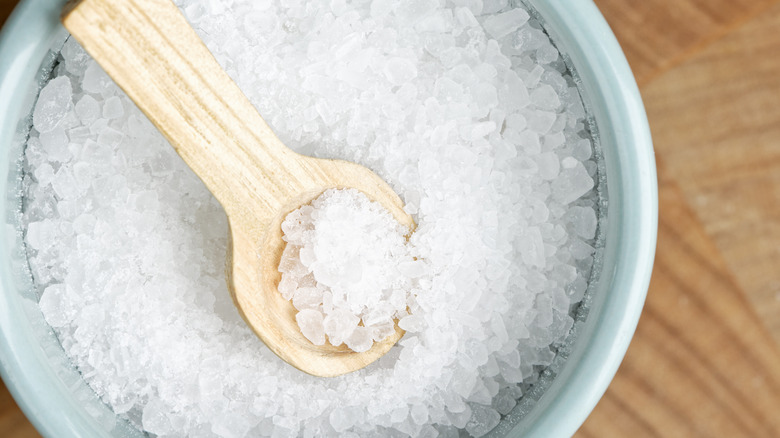Dehumidify Your Room Naturally With A Handy Item You Already Have In The Kitchen
If you're part of the curly-haired gang, then you already know all about humidity and the heartbreak that comes after straightening your hair, only to have it frizz back up again. Humidity is basically the amount of moisture in the air. While we can't do much about it outside, it should ideally be kept balanced in your home. A dry room is no fun — no one likes waking up to cracked skin and a dry throat. However, too much humidity can destroy your hardwood floors, ruin your walls, lead to feelings of fatigue, symptoms of dehydration, and even affect your house's hygiene. High humidity means dampness, which creates an environment friendly to bacterial and fungal growth like mold.
Optimal humidity levels range anywhere between 30% to 60%. Unfortunately, a good dehumidifier may be on the expensive side, but that doesn't mean you can't still find a natural way to keep those levels in check. One handy item you can find in your kitchen that will dehumidify your room in a flash is rock salt.
To know if your house is too humid, you can try the ice cube test. Put a few ice cubes into a glass and leave it in your bedroom. After about five minutes, check the condensation on the glass. If it's oversaturated with water droplets, then you need to get your humidity levels under control. Dash into your kitchen pantry and grab the first container of rock salt you can find.
Rock salt sucks moisture from the air
Controlling the humidity in your room is as simple as taking a quick trip to your kitchen for some rock salt. Rock salt (or sea salt) is different from table salt in that it's non-iodized, crystallized, and contains a host of trace minerals. This is due to its being less refined and more organic. It's also very hygroscopic — which means it draws moisture from the air. It's a quality that makes it perfect for dehumidifying.
To make your DIY dehumidifier (per Better Homes and Gardens), you will need two buckets. Make some holes in the first bucket and then place it into the second bucket. Then, pour the rock salt into the first bucket. The holes will ensure that the liquid drawn from the atmosphere drips down into the second bucket. Over time, as the second bucket fills up with water, you can throw away the run-off. Add more salt as it's gradually depleted.

